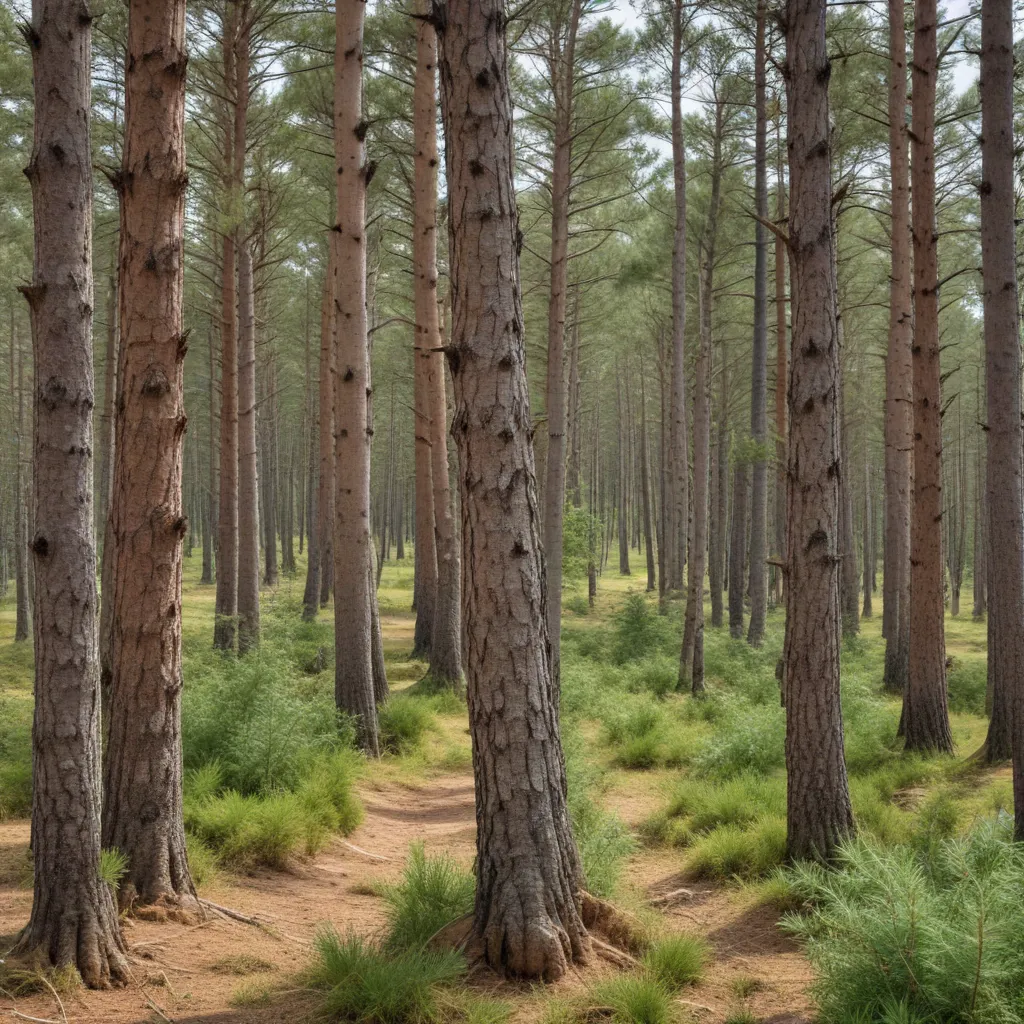
Crooked Pines Farm is a vibrant oasis of diverse ecosystems, home to a wealth of native plant and animal species. As a farm educator, I’m thrilled to take you on a journey of exploration through the rich biodiversity that thrives on our 50-acre property. From the towering trees of our mature woodlands to the buzzing meadows and the tranquil wetlands, each habitat plays a vital role in supporting the delicate web of life that makes Crooked Pines a thriving, resilient farm.
Ecosystems of the Farm
Woodlands and Forests
Our farm boasts several pockets of mature, mixed hardwood forests, providing critical habitat for a variety of woodland-dwelling creatures. Towering oaks, maples, and hickories dominate the canopy, their branches offering shelter and sustenance to songbirds, squirrels, and other small mammals. The understory is a tapestry of diverse native shrubs and herbaceous plants, including the delicate Dutchman’s breeches, bloodroot, and Virginia bluebells.
Meadows and Grasslands
Interspersed among the forested areas are expansive meadows and fields, bursting with a riot of colors from the blooming wildflowers, native grasses, and pollinator-friendly plants. These open spaces are a hub of activity, attracting butterflies, bees, and a variety of grassland-nesting birds such as the Eastern meadowlark and bobolink. The tall, swaying vegetation also provides important cover and forage for small mammals like the meadow vole and white-tailed deer.
Wetlands and Waterways
Crooked Pines Farm is blessed with several natural wetland areas, including a serene pond, a winding creek, and shallow ephemeral pools. These aquatic habitats support a diverse array of amphibians, reptiles, and aquatic invertebrates, such as the regal great blue heron, the elusive painted turtle, and the industrious caddisfly larvae. The emergent and floating vegetation, including cattails, arrowhead, and water lilies, provide essential shelter and feeding grounds for a multitude of wetland-dependent species.
Flora of Crooked Pines
Native Plant Species
Our farm is a tapestry of native plant life, from the towering bur oak trees to the delicate New England aster blooms. These indigenous species have evolved in harmony with the local ecosystem, providing food and shelter for a myriad of native wildlife. Some of our most remarkable native plants include the blue-eyed grass, the Virginia sweetspire, and the royal fern, all of which contribute to the overall ecological health and resilience of Crooked Pines.
Invasive Plant Threats
While the native plant diversity of Crooked Pines is impressive, we also face the ongoing challenge of managing invasive plant species that can disrupt the natural balance of our ecosystems. Vigilant monitoring and targeted removal of problematic plants like multiflora rose, Japanese honeysuckle, and garlic mustard are essential to protecting the integrity of our native habitats.
Rare and Endangered Plants
Amidst the abundant native flora, Crooked Pines is also home to several rare and endangered plant species, requiring extra care and attention. The bog bluegrass, the small whorled pogonia, and the American ginseng are just a few examples of these precious botanical gems, which we strive to conserve through habitat management and collaboration with local conservation organizations.
Fauna Inhabiting the Farm
Avian Diversity
The varied habitats of Crooked Pines support a rich diversity of bird life, from the melodic wood thrush and the vibrant scarlet tanager in our forests to the graceful great blue heron and the raucous red-winged blackbird in our wetlands. We also play host to a fascinating array of migratory bird species, such as the hooded warbler and the American kestrel, which rely on our landscapes for critical stopover and breeding grounds.
Mammalian Residents
Our farm is home to a diverse array of mammalian species, including the ubiquitous white-tailed deer, the industrious beaver, and the elusive bobcat. Smaller mammals, such as the eastern chipmunk, the Virginia opossum, and the southern flying squirrel, thrive in the variety of habitats, contributing to the overall richness of our farm’s fauna.
Aquatic Life at Crooked Pines
Freshwater Ecosystems
The freshwater habitats of Crooked Pines, including our pond and creek, support a fascinating array of aquatic life. Largemouth bass, bluegill, and longnose gar swim in the deeper waters, while amphibians like the green frog and the wood frog take advantage of the shallower areas. Beneath the surface, a bustling community of macroinvertebrates, such as caddisfly larvae and dragonfly nymphs, form the foundation of the aquatic food web.
Wetland Habitats
Our farm’s wetlands, with their emergent vegetation, floating plants, and submerged life, are true havens for a diverse array of wildlife. Painted turtles bask on fallen logs, great blue herons stalk their prey in the shallows, and leopard frogs serenade us with their distinctive calls. The cattails, water lilies, and arrowhead plants not only beautify the landscape but also provide crucial habitat and resources for this thriving wetland ecosystem.
Conservation Efforts on the Farm
Habitat Management
At Crooked Pines, we are committed to actively managing and enhancing our diverse habitats to support the rich biodiversity that calls our farm home. This includes reforestation efforts to expand our wooded areas, meadow restoration projects to revitalize our grassland ecosystems, and wetland protection measures to safeguard the integrity of our aquatic habitats.
Monitoring and Research
Alongside our hands-on habitat management, we engage in ongoing biodiversity surveys and ecological assessments to track the health and vitality of our farm’s ecosystems. Through these efforts, we can identify any emerging threats, monitor the success of our conservation initiatives, and share our findings with the broader community to advance the understanding and stewardship of our precious natural resources.
Crooked Pines Farm is a living testament to the incredible biodiversity that can thrive when we prioritize the coexistence of agriculture and nature. By embracing the diversity of our ecosystems, from the towering forests to the shimmering wetlands, we strive to cultivate a sustainable, resilient, and ecologically vibrant farm that serves as a model for generations to come. Join us in celebrating the wonders of Crooked Pines and the vital role it plays in preserving the delicate balance of our local environment.


